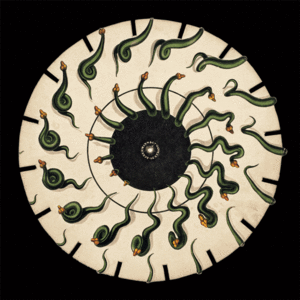Joseph Plateau facts for kids
Quick facts for kids
Joseph Antoine Ferdinand Plateau
|
|
|---|---|

Plateau in 1843
|
|
| Born | 14 October 1801 |
| Died | 15 September 1883 (aged 81) |
| Nationality | Belgian |
| Alma mater | University of Liège |
| Known for | Physics of soap bubbles (Plateau's laws), Plateau's problem |
| Scientific career | |
| Institutions | Ghent University |
| Doctoral advisor | Adolphe Quetelet |
Joseph Antoine Ferdinand Plateau (born October 14, 1801 – died September 15, 1883) was a Belgian physicist. He was one of the first people to show how a moving image could be created. He used spinning disks with drawings that changed slightly on one disk. The other disk had small openings. This invention, from 1832, was called the phenakistiscope.
Contents
About Joseph Plateau
Joseph Plateau's father was a skilled flower painter. Joseph was very smart from a young age. He could read when he was only six years old. This was quite unusual for the time.
When he was in primary school, a physics lesson really amazed him. He saw exciting experiments and promised himself he would learn their secrets. He spent school holidays with his uncle's family. His cousin, Auguste Payen, later became a famous architect.
Joseph faced a sad time at fourteen when he lost both his parents. This made him very sick.
On August 27, 1840, he married Augustine–Thérèse–Aimée–Fanny Clavareau. They had a son in 1841. His daughter, Alice Plateau, later married Gustaaf Van der Mensbrugghe. Gustaaf worked with Joseph and later wrote about his life.
Plateau was very interested in how our eyes see light. He once looked directly at the sun for 25 seconds. He believed this experiment caused him to lose his eyesight later in life. However, doctors today think he might have had a different eye illness called chronic uveitis.
In 1872, he became a special member of the Royal Netherlands Academy of Arts and Sciences. He died in Ghent.
His Studies and Teaching
Joseph Plateau was born in Brussels. He studied at the University of Liège. In 1829, he earned his degree in physical and mathematical sciences.
In 1827, he started teaching mathematics. He taught at the "Atheneum" school in Brussels.
Later, in 1835, he became a Professor of Physics. He taught physics at Ghent University.
His Discoveries and Inventions
In 1829, Plateau presented his doctoral paper. It was short, but it had many important ideas. It included his early findings on how colors affect our eyes. He also wrote about how moving images can look strange. He found a way to fix these distorted images using spinning disks. He called these "anorthoscopic discs."
In 1832, Plateau invented an early device for showing motion. He called it the "phenakistoscope". This was the first device to create the feeling of a moving image. It used two disks. One disk had small windows you could look through. The other disk had a series of pictures. When both disks spun at the right speed, the windows and pictures lined up. This made the pictures look like they were moving. This idea of projecting moving pictures eventually led to the invention of cinema.
Plateau also studied how liquids behave. He looked at things like capillary action and surface tension. These are forces that affect how liquids stick together or to surfaces. A math problem about finding the smallest surface area with a certain edge is named after him. It's called Plateau's problem. He also studied soap films a lot. He created Plateau's laws, which explain how soap films form shapes in bubbles and foam.
Images for kids
See also
 In Spanish: Joseph-Antoine Ferdinand Plateau para niños
In Spanish: Joseph-Antoine Ferdinand Plateau para niños




